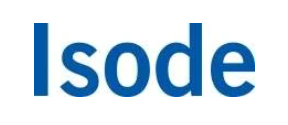
Military messaging systems must ensure the secure, reliable, and rapid exchange of information across various domains, from tactical field operations to strategic command centres. This often involves real-time communication under the most challenging conditions. The industry demands messaging solutions capable of handling high volumes of data, supporting interoperability among diverse platforms, and maintaining robust security against sophisticated cyber threats. Additionally, these systems must be resilient, capable of functioning in environments where other communication methods may fail.
Isode’s Harrier messaging solution is designed to meet these unique demands of military messaging, offering a secure, role-based, and highly configurable system that supports both formal and general communication needs.
Constrained network messaging
Military communication often needs to be transferred over constrained networks such as Satcom and high-frequency (HF) radio.
“There’s been a big increase in interest in HF radio and projects to modernise these radio networks,” explains Ben Madgwick, head of marketing at Isode. “One of Harrier’s major highlights is the system’s capability to operate over a HF Radio network in the same way it does over Satcom.”
HF radio is renowned for its long-range capabilities and ability to operate in challenging conditions where other communication methods might fail, such as in remote areas or during satellite communication outages.
Harrier also supports various military messaging standards such as SMTP, STANAG 4406, and ACP 127, ensuring compatibility with different military communication systems. Isode continually updates the system to find ways to overcome limitations with some of these older formats. According to Madgwick: “ACP 127 is an old military messaging format, which traditionally cannot handle attachments. We’ve innovated a way to send attachments over ACP 127 by breaking down the files into code and rebuilding them on the recipient’s end. This allows for the transmission of attachments or files that wouldn’t typically be possible with this protocol.”
Messaging capabilities
Unlike regular emails, military messages are sent between organisations and have specific fields for action and information recipients, indicating formal responsibilities and message priorities. With Harrier, users can access mailboxes based on their roles within an organisation rather than as individuals.
Additionally, Harrier offers a draft, review and release process, allowing for the formal review and approval of messages before they are sent. This is critical in military communications to ensure that messages are accurate and authorised. Harrier’s MMHS API enables web applications to submit and retrieve military messages, facilitating integration with other systems such as Command and Control (C2) applications. This API uses modern protocols such as WebSocket and HTTP for efficient communication.
Another important update is the integration with Systematic’s IRIS Forms, a widely used tool for sending formal military messages. This tool enhances the exchange of mission-critical information by supporting a comprehensive range of standardised military message formats, including NATO APP-11, USMTF, and OTH-T GOLD. This standardisation ensures interoperability among allied forces, enabling effective communication across land, maritime, and air services. Automated processes and a user-friendly interface save time and manpower, allowing military personnel to focus on more strategic tasks.
Enhanced security
Isode’s Harrier solution enhances security for military messaging through several advanced features. It supports end-to-end encryption and digital signatures using S/MIME, ensuring that messages are both secure and verifiable. The system also employs security labels, compliant with standards such as STANAG 4406 and RFC 2634, to enforce access controls based on message classification and user clearance levels. This prevents unauthorised access to sensitive information. Harrier also utilises Transport Layer Security (TLS) to protect data in transit, further securing communication channels. The integration of security policies and the use of capability checking ensure that messages adhere to predefined security protocols before being sent, thereby maintaining the integrity and confidentiality of military communications.
“In our most recent updates, we’ve added numerous security features, making it much easier to roll out across various environments. The updates have mainly focused on the administrative side, providing better control and security for administrators,” says Madgwick.
Isode’s Harrier messaging solution is a comprehensive and secure system designed to meet the complex needs of military communications, offering interoperability, robust security features, and integration capabilities with other critical military systems. To find out more, visit Isode’s website.


